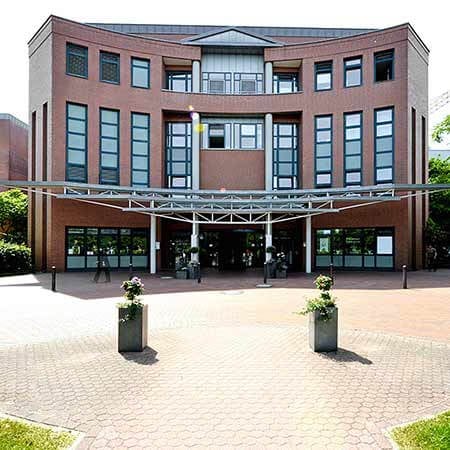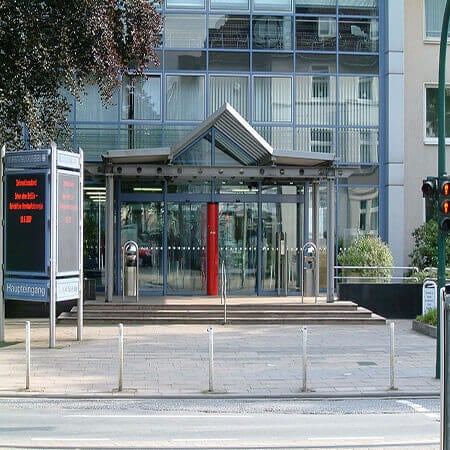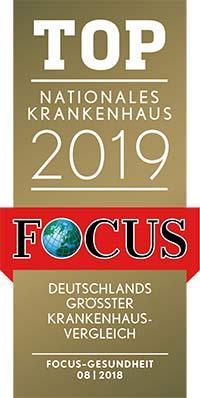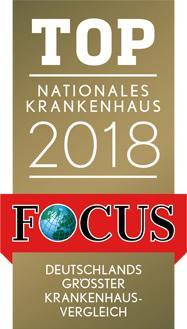Aortic coarctation is a severe congenital heart disease characterized by aortic isthmus stenosis. Without treatment, about 90% of children die within 2 years. With a relatively favorable "adult" form of the defect, the average life expectancy of patients is 35 years. To provide treatment for coarctation of the aorta, doctors abroad perform surgical procedures to remove the narrowed part of the vessel. Children also undergo minimally invasive procedures through the vessels on the leg: balloon angioplasty and stent implantation into the narrowed area of the aorta.
Content
- Symptoms of aortic coarctation
- Diagnostics of aortic coarctation
- Types of aortic coarctation
- Critical form of the heart defect
- Resection of the aorta to treat coarctation
- Balloon angioplasty for aortic coarctation
- Why is it worth undergoing aortic coarctation treatment abroad
- Treatment in Europe at an affordable price
Symptoms of aortic coarctation
Clinical manifestations of coarctation of the aorta in young children are caused by insufficient blood flow from the heart to the systemic circulation. The symptoms are as follows:
- Pale skin.
- Shortness of breath.
- Fatigue when breastfeeding, refusal to breastfeeding.
- Rapid pulse.
- Lack of weight gain.
- Lack of bowel movements.
- Low urine output (amount of urine excreted).
The key symptom in older children or adult patients is high blood pressure. The peculiarity of hypertension is that the pressure is high only in the upper half of the body. The pressure on the legs is much lower. The systolic blood pressure in the brachial artery reaches 200 mmHg and higher. The attempts to lower blood pressure with medication are often unsuccessful.
Cardiac surgery for the treatment of aortic coarctation should be performed as early as possible, even in the absence of severe clinical symptoms. This is due to the fact that blood pressure parameters often remain elevated even after surgery. As a result, patients have to receive lifelong drug therapy to lower blood pressure.
Other symptoms of coarctation include:
- Uneven body development: the upper half develops better than the lower one, so the patient has disproportionately thin legs.
- Headache.
- Nosebleeds.
- Noise in the ears.
Most of the clinical symptoms are caused by an increase in systemic blood pressure. Over time, the patients suffering from aortic coarctation also develop atherosclerosis, coronary heart disease, and valvular heart disease.
Diagnostics of aortic coarctation
Echocardiography is the main method for diagnosing congenital heart defects. It allows the doctors to detect the area of narrowing of the aorta in a typical location, in the isthmus.
Echocardiography usually includes a Doppler ultrasonography. Doctors detect turbulent blood flow in the area of the stenosis.
There are also some indirect signs of coarctation of the aorta. These include thickening of the left ventricle of the heart, poor mobility of its posterior wall, left atrial enlargement.
Angiography is considered the "gold standard" for diagnosing aortic coarctation. A contrast agent is injected into the vessels, and then its distribution is monitored. Thus, doctors can detect the area of narrowing, identify collateral (bypass) vessels.
An even more accurate examination, and at the same time less invasive one, is CT angiography. The use of computed tomography instead of X-ray examination allows the doctors to inject contrast agents into the ulnar vein, and therefore there is no need for arterial bed catheterization. Moreover, CT angiography is more informative in heart diseases. It helps to assess the condition of the aortic wall, to detect concomitant heart pathologies, to determine the optimal timing and treatment method for coarctation.
Types of aortic coarctation
In 1903, L.M. Bonnet introduced the concepts of pediatric and adult types of aortic coarctation. The pediatric type is the location of the narrowing closer to the heart than the ductus arteriosus (preductal type), while the adult form is characterized by the localization of the narrowed section of the artery behind the duct (postductal type). Although clinical medicine does not use this classification today, it reflects the essence of the heart defect: in a pediatric form, the child's condition is critical and early surgical treatment is required, while the course of the postductal type of aortic coarctation is more favorable, and pathology can only be detected in adulthood.
Today, cardiac surgeons use the International Nomenclature and Database Conferences for Pediatric Cardiac Surgery classification. It serves for distinguishing the following types of aortic coarctation:
- Isolated aortic coarctation.
- Aortic coarctation with a ventricular septal defect.
- Aortic coarctation with other heart abnormalities.
Each of the three types can be combined with hypoplasia (underdevelopment) of the aortic arch and isthmus.
Critical form of the heart defect
Preductal aortic coarctation is the most common type of the pathology. It is characterized by a sharp narrowing of the aortic isthmus. As a result, blood flow to the thoracic region of this blood vessel is limited.
The aorta is the largest artery and the initial section of the systemic circulation, from which all organs and tissues are supplied with blood. The organs will starve if not enough blood enters the aorta due to its narrowing. This results in multiple organ dysfunction syndrome, which becomes the cause of death of children in the first year of life.
The child's condition immediately after birth is usually compensated. This is due to the fact that the ductus arteriosus remains open. It connects the pulmonary artery and the aorta. As a result, some of the blood bypasses the narrowed area. However, this ductus becomes blocked soon after birth. This happens in the first days or even in the first hours of a baby's life. After the closure of the ductus, the patient's condition quickly deteriorates.
It is the coarctation of the aorta that is the most common cause of death from congenital heart disease among children in the first month of life. It accounts for 40% of deaths.
To prevent the ductus from closing and not to worsen hemodynamics, doctors inject the child with prostaglandin E1. Without any effect obtained, a surgical procedure is required: stent implantation into the aortic isthmus. Doctors implant a stent in it, which is a frame that allows the doctors to dilate the lumen of the vessel.
Resection of the aorta to treat coarctation
The method of choice for the treatment of aortic coarctation is surgical removal of the narrowed area. The doctor tries to remove the entire area, which contains the ductal tissue.
A lateral thoracotomy is usually used for surgical access. The incision is made in the third intercostal space.
Aortic coarctation occurs because the aorta contains ductus arteriosus tissue (ductal tissue). This ductus normally closes after a few days due to the proliferation of this tissue. If the same tissue is contained in the aorta, then it also grows, which leads to a narrowing of the vessel. Even if the narrowed area is removed, revision coarctation (aortic recoarctation) is possible. To prevent this, doctors dissect sections of the aortic wall, which contain ductal tissue in the subepithelial layer.
After removing the pathological areas of the artery, the doctor forms an anastomosis. He sutures the aortic arch and its descending part end to end. If a patient has a variant of coarctation with underdevelopment of the initial sections of the aorta, then an anastomosis is applied end to side between the descending part of the aorta and the proximal (distant) section of the arch.
Doctors in Europe refused to perform direct isthmoplasty. When performing this surgery, surgeons made an incision in the area of narrowing, and closed the defect with a patch. Thus, part of the aorta was not removed, but only dilated. However, it turned out that this approach often caused the development of a relapse of the disease. Ductal tissue and membrane are preserved in the wall of the artery, and therefore repeated proliferation of this tissue with aortic obstruction is possible. Even if the disease does not recur, an aneurysm is often formed in the affected area after isthmoplasty.
Indirect isthmoplasty with a subclavian artery flap is not performed for the same reason.
In childhood, doctors try not to use biological or synthetic materials for the reconstruction of the aorta. This is due to the fact that the child grows, and the materials used to perform the plastic surgery remain the same size. However, if doctors have removed too much of that blood vessel, adult patients can undergo surgery to replace the aorta.
Balloon angioplasty for aortic coarctation
Medical specialists in developed countries often use minimally invasive endovascular procedures, which are performed through the blood vessels. They are safer than surgical interventions.
Balloon angioplasty, like other endovascular manipulations, is not performed in newborns. Their femoral artery is very small. Thrombosis often develops in the area of access. At this age, the procedure itself is not always effective.
Nonetheless, already from the second month, balloon angioplasty can be used as an alternative to open surgery. The essence of the method is that a balloon is introduced into the narrowed area, which is inflated by injecting saline solution into it. The balloon expands and dilates the narrowed area of the aorta.
This procedure is not used in adult patients, since the stretching of the vessel may contribute to the formation of an aneurysm. However, the arteries in children are elastic, stretch well, so such problems usually do not arise.
After the vessel has been dilated with a balloon, its repeated narrowing is possible after a while. Therefore, a stent is usually implanted inside the aorta. This is the frame, which keeps the artery open.
Balloon angioplasty is effective only for the following conditions:
- Moderately local aortic obstruction like an hourglass.
- Absence of aortic hypoplasia.
In addition, it can be used in patients who have suffered a relapse after open surgery. In this case, revision treatment of aortic coarctation is carried out with the use of minimally invasive techniques. Balloon angioplasty is carried out no earlier than 3 months after the surgical intervention.
Why is it worth undergoing aortic coarctation treatment abroad
Cardiology and cardiac surgery are high-tech medical fields. In recent years, great progress has been made in them, but this applies primarily to economically prosperous countries, with good financing of the healthcare system. Successful treatment of cardiovascular diseases, including heart defects, requires high-quality equipment and experienced specialists. All this is available in the developed European countries. You can visit one of them to receive the highest level of medical care.
There are several reasons for you to undergo treatment of aortic coarctation abroad:
- Successful heart surgeries are performed even in newborn children, including premature infants.
- Doctors do not perform outdated surgeries, after which there is an increased risk of aortic aneurysm or recurrent artery obstruction.
- Specialists perform not only open heart surgery, but also minimally invasive surgical interventions, such as balloon angioplasty and stent implantation.
- Minimal mortality of patients after cardiac surgery.
- Successful treatment of even severe forms of heart disease: with a large length of the obstruction area, with aortic hypoplasia.
- Possibility of simultaneous correction of several congenital heart defects during a single intervention.
Hospitals abroad offer departments of cardiology with state-of-the-art equipment, reputable highly qualified doctors, as well as polite and attentive medical staff. After heart surgery, patients are provided with comprehensive care, proper symptomatic therapy and high-quality rehabilitation services.
Treatment in Europe at an affordable price
To undergo treatment in one of the European hospitals, you can use the services of the Booking Health specialists. On our website, you can see the cost of treatment in Europe, compare prices and book a medical care program at a favorable price. Treatment in Europe will be easier and faster for you, and the cost of treatment will be significantly lower.
You are welcome to leave your request on the Booking Health website. Our consultant will contact you within 24 hours. The medical tourism facilitator from the Booking Health company will organize your trip for treatment in Europe. We will provide the following benefits for you:
- We will choose a hospital for treatment in Europe, whose doctors specialize in the treatment of aortic coarctation and achieve the best results.
- We will help you overcome the language barrier, establish communication with your attending physician.
- We will reduce the waiting time for the medical care program. You will receive medical services on the most suitable dates.
- We will reduce the price. The cost of treatment for aortic coarctation and other heart diseases in a European hospital will be lower due to the lack of overpricing and additional coefficients for foreign patients.
- We will solve all organizational issues, such as paperwork, booking a hotel room, transfer from the airport to the hospital. An interpreter will accompany you abroad.
- We will prepare a medical care program and translate medical documents. You do not have to repeat the previously performed diagnostic procedures.
- We will keep in touch with the hospital after treatment in Europe.
- We will organize additional medical examination and treatment of heart diseases in European hospitals, if required.
- We will buy medicines abroad and forward them to your native country.
Your health will be in the safe hands of the world's leading doctors. The Booking Health specialists will help reduce the cost of treatment for heart disease, organize your trip, and you will only have to focus on restoring your health.
Authors: Dr. Nadezhda Ivanisova, Dr. Sergey Pashchenko














